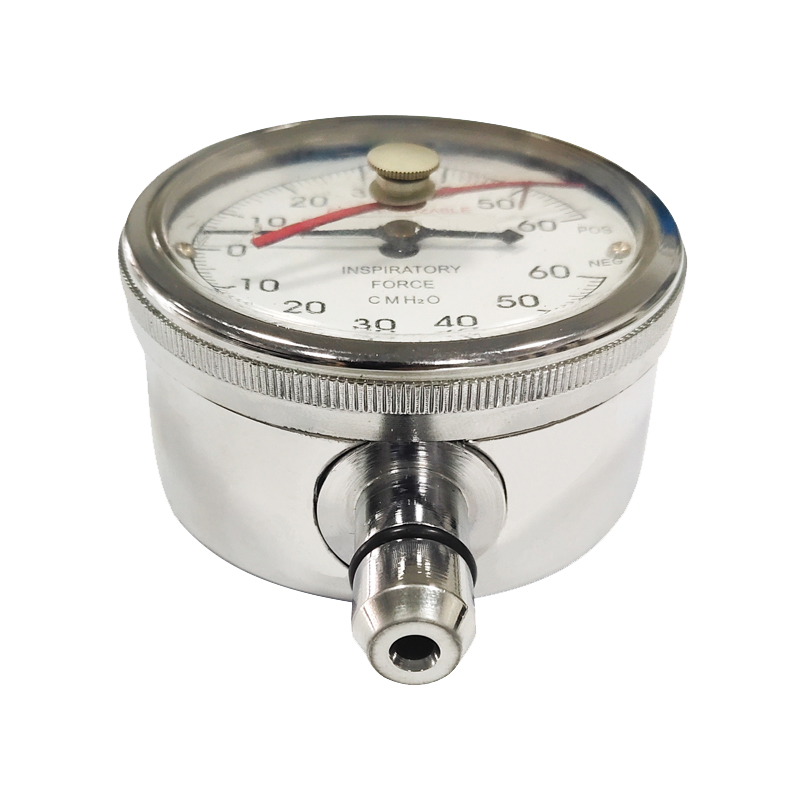
Set . 21, 2024 22:56 Back to list
diaphragm contact pressure gauge
Understanding Diaphragm Contact Pressure Gauges
Diaphragm contact pressure gauges are essential tools in various industrial applications and laboratory settings for measuring and monitoring pressure. Their unique construction and operational principles allow them to provide accurate readings in a range of environments, making them invaluable in processes where pressure control is critical.
How Diaphragm Contact Pressure Gauges Work
At the heart of a diaphragm contact pressure gauge is a flexible diaphragm that moves in response to pressure changes. When a pressure is applied to one side of the diaphragm, it deforms, and this movement is converted into a measurable parameter. The deformation of the diaphragm is typically linked to a mechanical system that includes a pointer and a dial, which translates the movement into a reading that can be easily interpreted.
These gauges often come equipped with contacts that trigger at preset pressure levels. When the diaphragm deflects enough to reach a specific threshold, it actuates a switch, enabling or disabling electronic devices or alarms. This feature is particularly useful in automated processes where maintaining precise pressure is crucial for safety and operational efficiency.
Importance and Applications
Diaphragm contact pressure gauges are widely utilized across various sectors, including oil and gas, pharmaceuticals, food and beverage production, and water treatment facilities. In the oil and gas industry, for instance, maintaining precise pressure levels is critical for safety; pressure gauges help monitor equipment to prevent catastrophic failures. Similarly, in pharmaceutical manufacturing, accurate pressure readings are necessary to ensure that products meet regulatory standards.
diaphragm contact pressure gauge

In the food and beverage sector, these gauges help maintain the appropriate pressure during processing and packaging, ensuring product quality and safety. Their robustness and reliability make them well-suited for environments where conditions can change rapidly.
Advantages of Diaphragm Contact Pressure Gauges
One of the main advantages of diaphragm contact pressure gauges is their ability to handle varying pressures without compromising accuracy. They can measure both high and low pressures, catering to a diverse range of applications. Their design minimizes the risk of leaks and contamination, which is particularly important in sensitive environments like labs and food production facilities.
Furthermore, diaphragm gauges are relatively simple to install and maintain. They do not require large amounts of space, making them suitable for installations where compactness is essential. The mechanical nature of these gauges also means that they can operate without needing complex electronic components, thereby reducing the likelihood of failures associated with electronic systems.
Conclusion
In summary, diaphragm contact pressure gauges play a crucial role in various industries by providing reliable and accurate pressure measurements. Their unique design and functionality make them suitable for challenging environments where both accuracy and safety are paramount. As technology advances, we can expect further innovations in pressure gauge designs, enhancing their performance and expanding their applications in more sophisticated systems. Understanding the dynamics of diaphragm contact pressure gauges not only aids in selecting the right instrument but also contributes to optimizing processes in which they are employed.
-
Top Diaphragm Seal Pressure Gauge Suppliers Precision & Durability
NewsMay.29,2025
-
Ashcroft Diaphragm Pressure Gauges High Accuracy & Durable Design
NewsMay.29,2025
-
WIKA Diaphragm Seal Pressure Gauges Corrosion-Resistant & Durable
NewsMay.29,2025
-
Precision Differential Pressure Gauge Assembly Reliable & Customizable Solutions
NewsMay.29,2025
-
WIKA Sanitary Diaphragm Pressure Gauge High Precision & Durability
NewsMay.29,2025
-
HD Fire Pressure Gauges High Accuracy & Durable Solutions
NewsMay.28,2025
